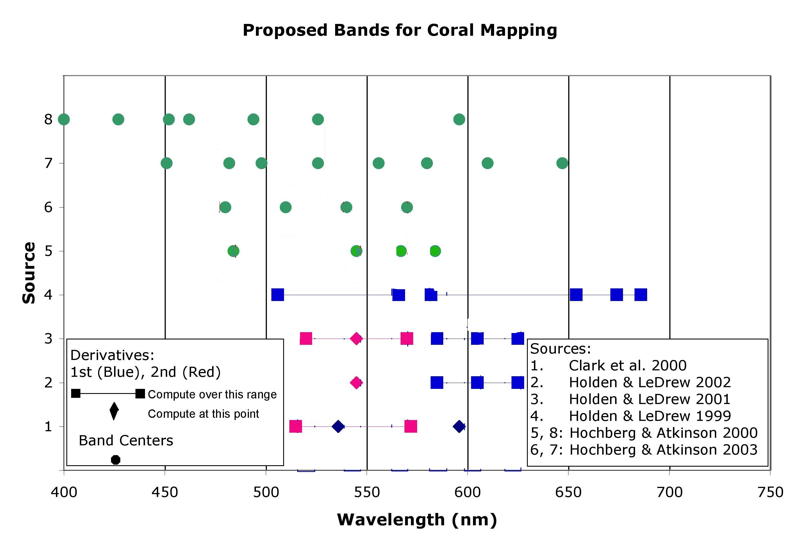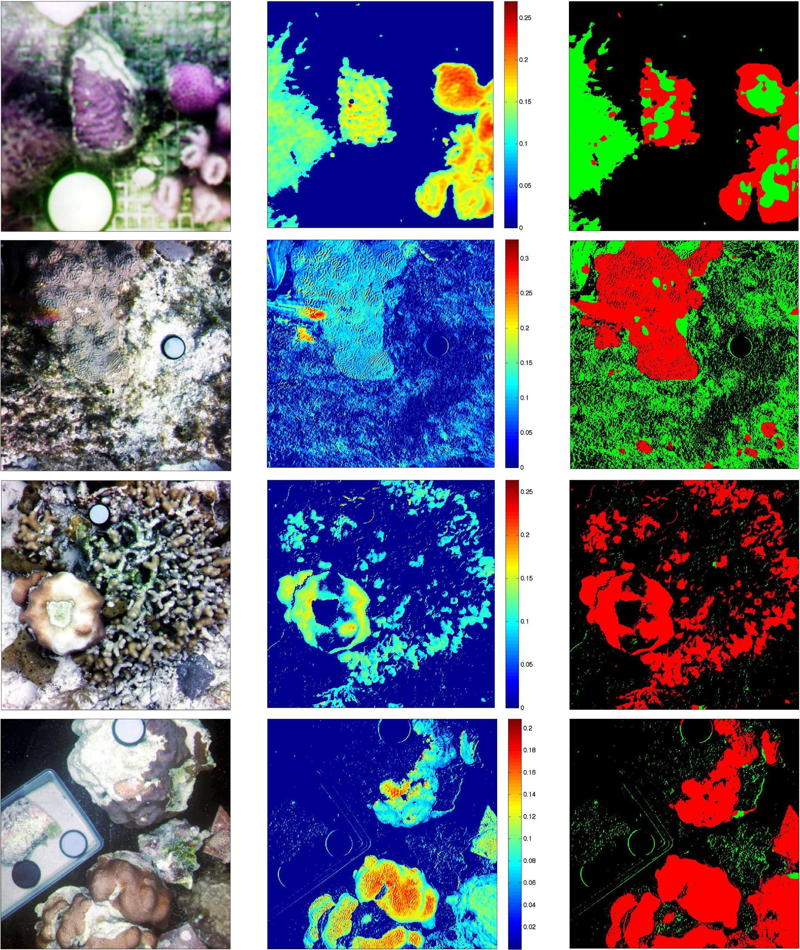Gleason, A. C. R., R. P. Reid and K. J. Voss, 2007: Automated classification of underwater multispectral imagery for coral reef monitoring, Proceedings of MTS / IEEE Oceans 2007, 1-4 October, 2007, Vancouver, B.C. doi:10.1109/OCEANS.2007.4449394
(Winner of the student poster competition)
Key points:
- High spectral resolution was an improvement over coarse spectral bands for classifying underwater imagery, but narrow spectral bands alone were not a complete solution for automated classification of reef images.
- The important result was that acquiring underwater imagery in narrow spectral bands and pre-processing the data with a band ratio greatly simplified texture classification.
Abstract- Survey protocols for monitoring the composition and status of coral reef benthic communities vary in the level of detail acquired, but fundamentally follow one of two approaches: 1) a diver identifies organisms in the field, 2) an analyst identifies organisms from underwater imagery (photos or video). Both methods are highly labor intensive and require a trained biologist / geologist. A method for automated classification of reef benthos would improve coral reef monitoring by reducing the cost of data analysis. Spectral classification of standard (three-band) color underwater imagery does not work well for distinguishing major bottom types. Recent publications of hyperspectral reflectance of corals, algae, and sediment, on the other hand, suggest that careful choice of narrow (~10 nm) spectral bands might improve classification accuracy relative to the three wide bands available on commercial cameras. We built an underwater multispectral camera to test whether narrow spectral bands were actually superior to standard RGB cameras for automated classification of underwater images. A filter wheel was used to acquire imagery in six 10 nm spectral bands, which were chosen from suggestions in the literature. Results indicate that the algorithms suggested in the literature require very careful compensation for variable illumination and water column attenuation for even marginal success in classifying underwater imagery. On the other hand, a new algorithm, based on the normalized difference ratio of images at 568 nm and 546 nm can reliably segment photosynthetic organisms (corals and algae) from non-photosynthetic background. Moreover, when this new algorithm is combined with very simple texture segmentation, the general cover classes of coral and algae can be discriminated from the image background with accuracies on the order of 80%. These results suggest that a combination of high spectral resolution and texture-based image segmentation may be an optimal methodology for automated classification of underwater coral reef imagery.
 ART GLEASON | Ocean Optics
ART GLEASON | Ocean Optics
